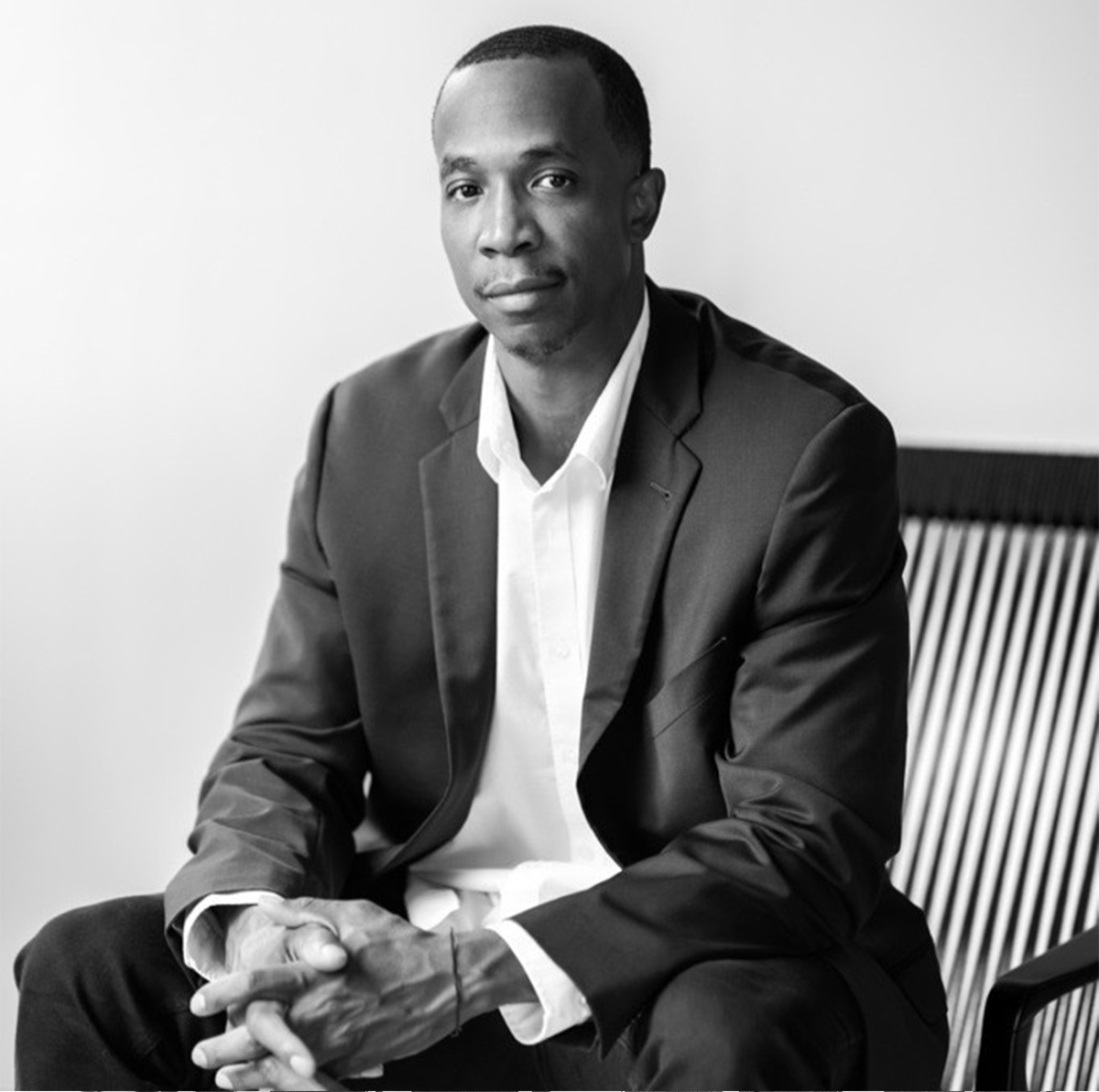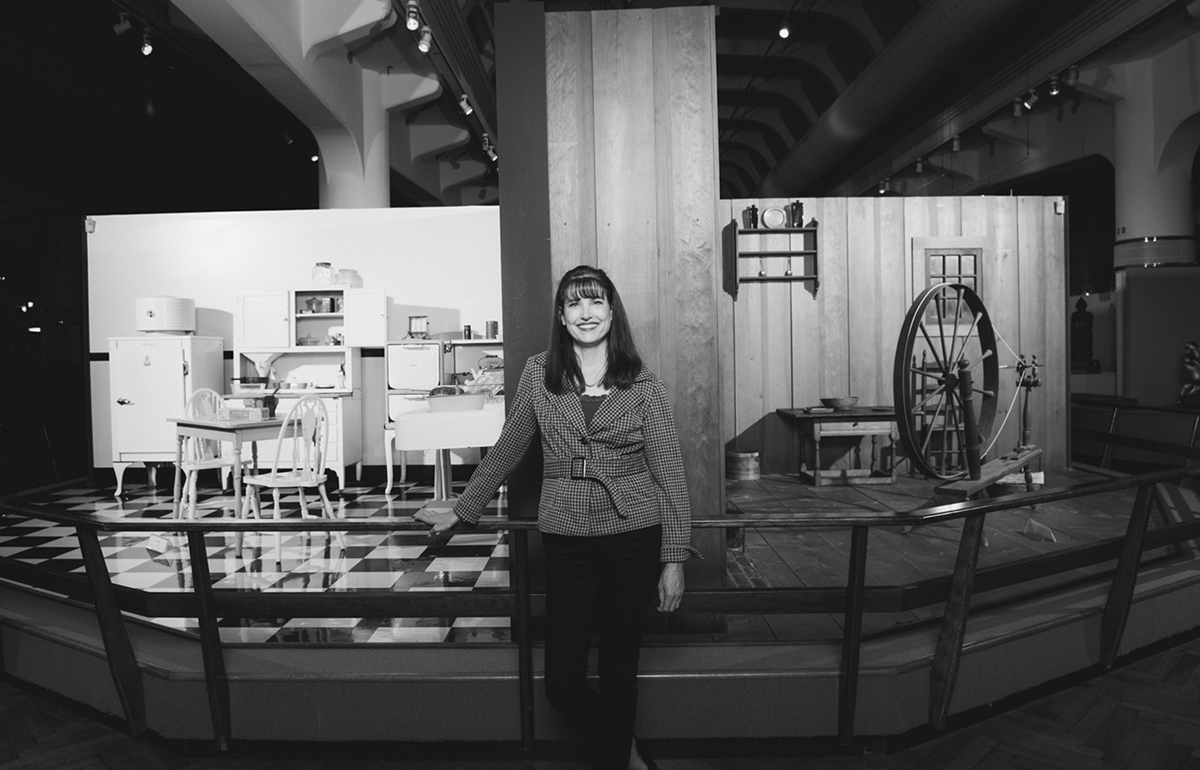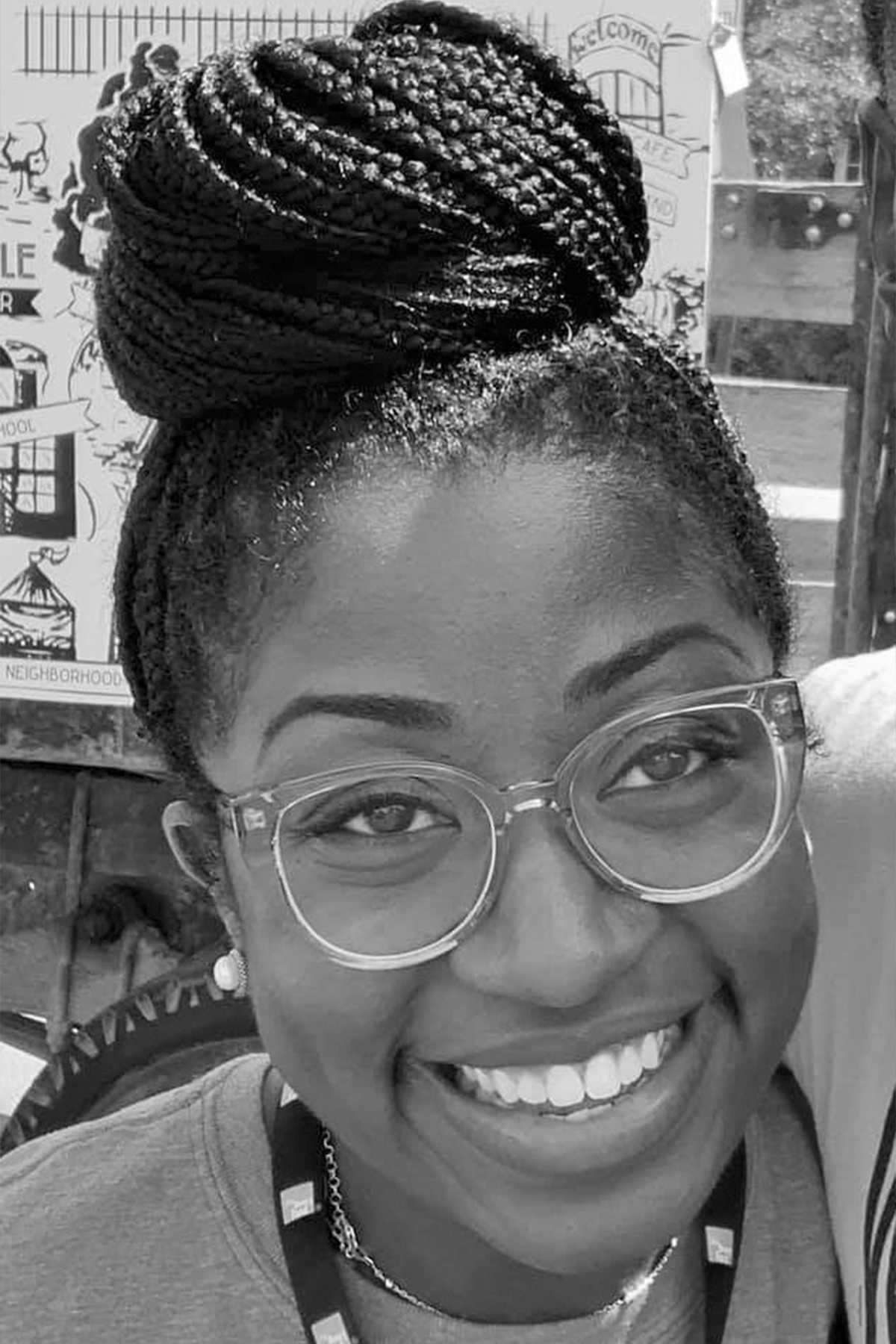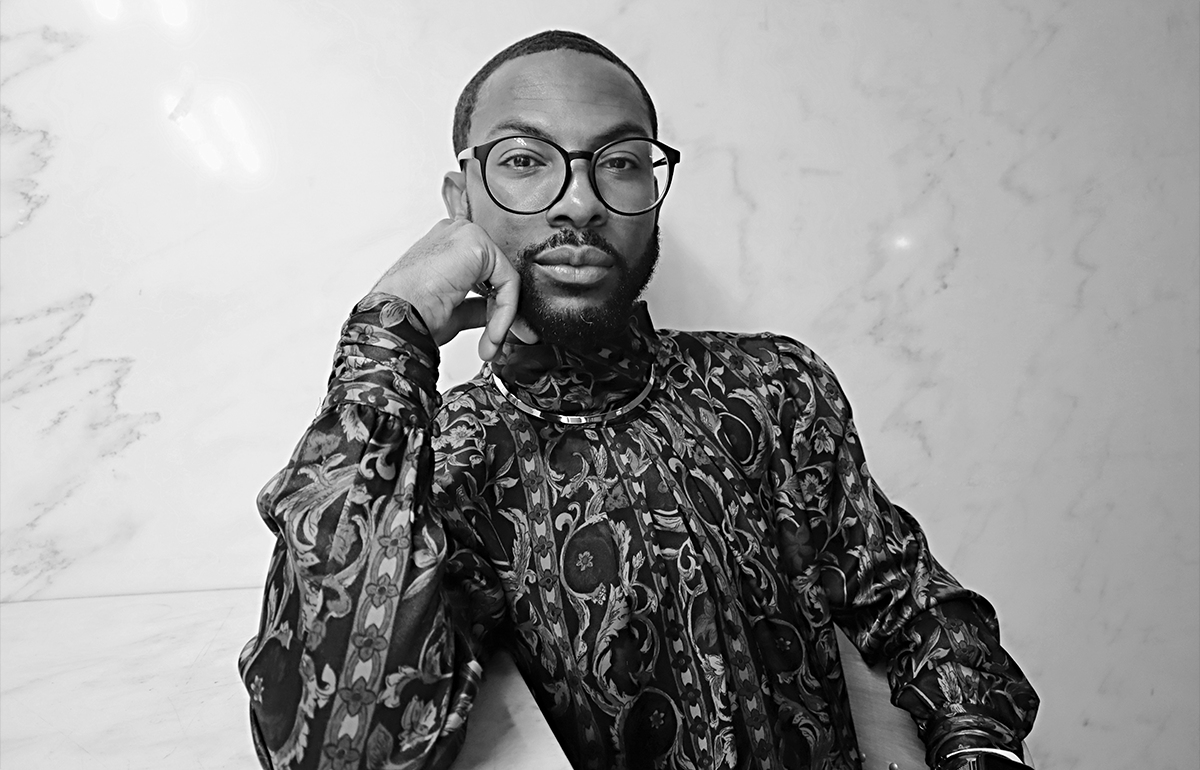The Alchemy of Empathy
Experiential opportunities in cultural spaces can nourish emotional connections
By Elif M. Gokcigdem, Ph.D.
To challenge behaviors that contribute to fragmentation in our communities, we need more than an intellectual understanding of our interconnectedness. Besides knowledge, we need a deeper connection that makes us care and act compassionately toward the whole to which we belong — all of humanity, our kin that we share our world with and our planet.
We perceive and experience this indivisible whole from our respective worldview, which is shaped by the narratives we grow up with, our physiology, culture, language and other factors. The way we view the world influences how we make meaning of ourselves as well as what we share our existence with — people, objects, ideas, nature. What we find meaningful and worthy of our love, in turn, influences our behavior and actions, shaping how we live.
Empathy, our inherent ability to perceive and imagine what it might feel like to be the other, challenges our habitual worldview. When we feel an emotional connection to others’ experiences, our worldview expands to include diverse narratives. Experiencing this capaciousness lets us develop a broader sense of self who is able to witness their own attitudes, choices and behavior within the wider context of a collective existence. Witnessing and articulating our unique perception empowers us with agency to notice our motivations and calibrate our actions.
As we face increasingly complex global challenges, it is essential to reflect upon what empathy means to the collective of which we all are an integral part. Cultural spaces — like museums — are critical resources for empathy-building. Informal learning platforms, they can expand our worldview, allow us to explore narratives different from our own and perceive ourselves and our actions not as separate and singular, but integral to the whole.
During the last decade, I have been immersed in a multifaceted exploration of empathy-building through museums, leading a multidisciplinary and international community to deepen our understanding of this ability to relate to others and their experiences, and how to innovate new tools that can position museums as incubators for further empathy-building.
As I observed how intentionality and collaboration across cultures, disciplines and sectors were essential to this effort, the Designing for Empathy® framework and ONE - Organization of Networks for Empathy were born. Designing for Empathy® is an evolving framework that considers a oneness mindset as a master perspective, inspiring how we might see the world around us and our place in it, while reminding us to calibrate and harmonize our attitudes and behavior toward the collective. Within this context, empathy-building is defined as an intentionally designed, transformative lived experience through an encounter with the other that leads to an understanding of the self — not merely as a dispensable part, but as essential to the whole.
Museums allow us to intentionally utilize them as readily available platforms for transformative experiences of empathy and contemplation, where each encounter can be an opportunity to develop a knowledge of our humanness and the filters through which we perceive the world. While empathy-building requires intentionality, it also demands the presence of conducive ingredients within the “alchemy of empathy: storytelling, experiences of awe and wonder, dialogue, experiential learning and contemplation. Each of these ingredients (which are further explained on the following pages) offers a portal into a deeper knowing due to the transformative qualities they are rooted in — curiosity, vulnerability, authenticity, sincerity, humility, courage and trust.
Ingredient: Storytelling
Through first-person accounts, powerful stories from the point of view of the cultures featured, authentic objects and factual information, museums can offer opportunities to bear witness and articulate past and current events, and imagine what it would feel like to be a part of another’s lived experience.
Example: Greensboro Woolworth Lunch Counter
The Smithsonian’s National Museum of African American History and Culture in Washington, D.C., invites visitors to immerse themselves in the powerful narratives of the segregated Greensboro Woolworth Lunch Counter interactive exhibition. As visitors take a seat at a modern interpretation of the 1960s diner, they can choose to learn about the Selma March, the Montgomery Bus Boycott and the Woolworth’s Sit-in. Surrounded by dynamic visual storytelling elements and authentic artifacts, participants are then presented with choices that test their willpower in the face of adversity as they are asked to think about how they would respond if faced with these situations.
Ingredient: Awe & Wonder
An extraordinary experience, something that is otherwise inaccessible in our daily lives, or the immediacy of a newly found perspective on something ordinary, can shift our entrenched perspectives and paradigms, allowing us to explore our capacity for expansion and transformation through vulnerability and contemplation.
Example: Unsupervised
New York MoMA’s historic acquisition of Refik Anadol’s AI-powered installation Unsupervised offers a captivating experience that challenges our sense of place, time and scale. It invites us to find solace within by immersing ourselves in something vast, generative and fluid in its simultaneous and ever-changing creative expression.
Ingredient: Dialogue
Learning to hold off judgment is essential to any meaningful dialogue. Cultural resources in museums can provide a wide spectrum of context, bringing people together for facilitated experiences of non-judgmental listening and dialogue. Proximity to another’s narration of a lived experience, combined with intentionality and undivided attention, create space for empathy and trust to flourish.
Example: A Collective Dialogue: Exploring Belonging through Art & Empathy
At this public workshop I facilitated at the National Gallery of Art in Washington, D.C., we explored the themes of “othering and belonging,” utilizing Robert Motherwell’s massive Reconciliation Elegy as the context for an engaging collective dialogue using the Creative Tensions method. Within this method, movement is often used in situations that require perspective, creativity and idea generation. A facilitator presents participants with prompts and invites them to express their stance on the matter by moving to one side or the other of a predetermined area. As individuals are invited to explain their choices, others are free to change their positions by getting closer or farther away from what is being shared.
Ingredient: Experiential Learning
An encounter is required to create, track and unfoldan inner experience such as empathy or a perspective shift, where one can witness the self, the other and the greater context within which the experience is unfolding. Through experiencing, witnessing and articulation, one might develop the agency to take responsibility of habitual perspectives and biases at the point of their arising.
Example: Human Phenomena
San Francisco’s public learning lab, the Exploratorium, includes the Osher Gallery which focuses on Human Phenomena. Here, a variety of playful, yet thought-provoking experiences enable visitors to explore some of the world’s most pressing problems through the lens of human perception, behavior and social interactions.
At the Science of Sharing exhibit set, for example, visitors are presented with situations inviting an immediate response in the form of a choice expressed by a real-time, real-life action. This human experience of encountering a moment of choice then becomes the subject and the object of the experience, opening up possibilities for developing a knowledge of the self through articulation and contemplation.
Ingredient: Contemplation
Expanding our circle of empathy requires conscious awareness, meaning-making and reflection. Contemplation allows us to go beyond our first impression of what is apparent into a search for its meaning and essence. What we find meaningful, or meaningless, shapes who we become as it influences our behavior. Through contemplation, each encounter with the other becomes an opportunity to discover something new about the self, and ultimately to transcend the self within a wider context.
Example: Mandala Lab
New York’s Rubin Museum of Himalayan Art’s Mandala Lab is a traveling experience that centers on an ancient Tibetan mandala to invite deep reflection on the human condition. As participants witness their unique perception and behavior through a series of encounters, they also observe a wide variety of reactions expressed by others around them, inviting contemplation on individual perspectives and actions within the expanded context of our shared humanity.
Editor’s note: The Rubin Museum transitioned to a decentralized, global museum model in fall 2024, closing its 17th Street building in New York City. Today, the museum serves people across the world through traveling exhibitions and experiences, along with partnerships, collection sharing, resources for artists and scholars engaging with Himalayan art, and digital content.
——
Time for Self Reflection
A look at what The Henry Ford is doing to build empathy on its campus, through the lens of those doing the work
The Henry Ford Magazine asked a small collective of The Henry Ford’s team to reflect on the role museums can play in empathy-building and what they experience, contemplate and hope to accomplish on our very own campus to encourage visitors to explore their own sense of self and interconnectedness to others. Experts from varied disciplines were chosen to give readers multiple perspectives, from longtime curators and our leadership responsible for talent development and community engagement to our most analytical minds and new faces giving fresh takes on theatrical programming. For scope, we asked everyone to consider the same questions. Here are the questions and their responses.
Why is it vital for educational/entertainment venues such as a museum to build empathy into their “culture” — from their guest experiences and programming to their collections and physical spaces.
From your perspective, what is The Henry Ford doing right in terms of its empathetic interventions? Can you share your hopes for the future?
Empathy Through Insight

Jarell Brown
Director of Analytics & Business Intelligence (B.I.R.A),
Principal Innovator of Innovation Atlas
The Henry Ford
Building empathy into the culture of educational and entertainment venues like ours (The Henry Ford) is essential for fostering inclusive and trusting environments for our guests. Empathy allows us to connect with diverse audiences and communities by understanding their past and current experiences, and their needs and aspirations, so we can create environments and programming that resonate and empower their voices.
By prioritizing empathy and inclusivity, museums can make their programs and exhibits more accessible, sustainable and meaningful to all visitors, regardless of their background, abilities or how they engage with The Henry Ford. Leveraging admission programs, educational programming and entertainment events like our Salute to America, Hallowe’en and Holiday Nights through The Henry Ford’s Community Outreach Program, for example, creates accessible opportunities that address some of the unique challenges communities face when trying to visit.
The Invention Convention Worldwide program, which leverages data and insights from the geographic information system Innovation Atlas, identifies schools, communities and regions for participation in learning how to invent, regardless of their socioeconomic background. Invention Convention Worldwide, like other accessibility programs across our organization, levels the playing field and inspires the next generation of innovators.
By fostering and practicing a culture of empathy within your programs and mission, museums can play a vital role in addressing and supporting unique solutions to the challenges communities face, breaking down barriers and inspiring the next generation.
Empathy Through Exhibitions

Jeanine Head Miller
Curator of Domestic Life
The Henry Ford
Museums are more than places that provide information — they offer opportunities to explore new experiences and be introduced to perspectives that are not our own. As thought-provoking places, museums have an important role in nurturing empathy.
Museums provide unique, often immersive, experiences as guests stand in the presence of intriguing objects while learning their stories, or enter spaces inhabited by people long ago. There is an immediacy, a visceral quality, to this multisensory experience that conveys deeper understanding of others’ lived reality.
Museum guests feel welcome when they “see themselves” in museum exhibits. By including stories of diversity, museums embrace underserved audiences and allow all guests to see the world through others’ eyes.
The Henry Ford has expanded the stories that it tells, moving beyond a traditional lens of white, middle-class experience to encompass a more inclusive vision. Our permanent exhibits are now planned with diverse viewpoints at the center of the conversation. Recent pop-up exhibits have shared the experiences of the LGBTQ+ community, explored more deeply the African American struggle for civil rights, and presented diverse December holiday traditions beyond Christmas.
We continue to gather an increasingly diverse range of objects and archival materials that represent more broadly the American experience, reflecting differing experiences and multiple perspectives of others who share our complex world. When possible, we also capture the reminiscences of those who used the objects, preserving layers of context and personal meaning — “voices” that will continue to foster deeper understanding for guests far into the future.
The ability to see the world as others do — and use it to guide our actions — is key to creating a kinder, more just world. My hope is that museums will continue to play a significant role in cultivating empathy, creating deeper, lasting understanding that encourages a worldview that values everyone.
Empathy Through Objects

Katherine White
Curator of Design
The Henry Ford
An 18th century German secretary desk sits at the edge of the Fully Furnished exhibit in Henry Ford Museum of American Innovation, surrounded by examples of mostly American-made furniture. A guest might easily stroll by the desk on their way to the shiny Dymaxion House or a new temporary exhibition in The Gallery, especially if the guest is not a furniture enthusiast. But like most objects in the museum, the desk is not as straightforward as a cursory glance suggests.
A closer look at the desk (or rather, the label nearby) reveals an incredible story of the desk and its owners, their persecution and survival as a Jewish family in Nazi Germany, and the family’s journey to America with all their belongings — including this heirloom desk.
This object, like all others in the museum, is really about people.
Museums are about people. The objects exhibited within them were created by people. People used these objects, invented them, selected them, cherished them, passed them down to their children, or perhaps sold them at a garage sale. Objects are powerful — they embody the stories of people. Objects have the power to transport us to another’s perspective and in doing so, create empathy for others both like and unlike us.
Museums are one of few public institutions that the public continues to find trustworthy. We have an incredible opportunity to cultivate empathy in the public through acquiring and exhibiting objects that tell a variety of stories. How challenging it is to demonize a group of people when encountering an object that illustrates their humanity!
We continue to work toward acquiring a more inclusive and diverse collection of objects, which will then become the basis for more inclusive exhibitions, programs and experiences for our guests. In the not-so-distant future, I hope that every person can see themselves reflected within this museum — and that every person encounters a perspective different from theirs, too.
Empathy Through Outreach

Anita Davis
Program Manager, Community Outreach & Engagement
The Henry Ford
Museums have a tremendous opportunity to inspire, empower and uplift underrepresented and minoritized groups. Oftentimes the stories of these groups are marginalized to trauma and oppressive snippets of their history. It can be much harder for certain communities to find hope and inspiration when there isn’t a balancing of hardship with celebration or unjust with equity in the storytelling of their history. This oversight has the potential to lead to mistrust of cultural and educational institutions.
the flipside, by not providing a holistic view of a particular community’s history, those on the outside may come to a misinformed conclusion. By having balanced storytelling, society can show more compassion toward one another, draw on similarities while also celebrating the uniqueness of others.
Through The Henry Ford’s Community Outreach Program, we are intentional about sharing the mission and work of our community partners. Our partners represent a vast variety of service organizations that support communities with great need and little resources. By spotlighting these organizations, our various networks can find personal connections, be inspired and hopefully decide to get involved. It’s important for us to create an environment of empathy and not pity. Pity can position someone as superior and the other as inferior. We combat this by providing opportunities for resource sharing and collaboration between corporate partners, communities partners, donors and The Henry Ford staff. We have learned that collaboration and intentional engagement among networks can lead to shared compassion for the well-being of a particular community.
My hope for the future is that The Henry Ford continues to build toward creating a more honest, inspirational and welcoming environment for all communities represented in our collection. Given the nature of our institution and the position it holds, we have a huge responsibility to ensure that we don’t misrepresent the people whose stories have been historically minimized.
Henry Ford is such a unique experience. We can truly be that community conveyor that inspires other cultural institutions to rethink how they tell stories and engage with surrounding communities.
Empathy Through Leadership

Mike Moseley
Director of Leadership and Talent Development
The Henry Ford
I always tend to look at things from the perspective of what’s the responsibility of leaders. It’s my job. As the director of Leadership and Talent Development, I will tell you that empathy is a vital leadership quality that benefits both individuals and organizations. By understanding and connecting with others, empathetic leaders can create a positive and productive work environment, drive innovation and build strong relationships.
So, as that applies to our work as museum leaders, using the ability to understand and share feelings of others helps people connect to their history, heritage and the world around them. A leader who can deeply understand and connect with the diverse audiences they serve — both staff and The Henry Ford guests — is better equipped to create meaningful experiences and foster a sense of belonging that is necessary for authentic storytelling.
Museum leaders who act empathetically attract people from all walks of life, with varying backgrounds, interests and experiences. A leader who can empathize with these diverse audiences can better understand their needs, desires and perspectives. This understanding allows for the creation of exhibits and programs that resonate with a wider range of people.
Empathy fosters trust and connection between leaders and their staff, volunteers and community members. When people feel understood and valued, they are more likely to be engaged and supportive of our institution’s mission.
The Henry Ford should be a welcoming and inclusive environment for all. We are continuing to work on that.
By empathizing with the experiences of marginalized communities, our leaders can ensure that our collections, exhibits and programs are representative and respectful of diverse perspectives.
The world is constantly evolving, and we must adapt to stay relevant. Empathy helps leaders to anticipate and respond to changing needs and preferences, ensuring that The Henry Ford remains a valuable resource for the community.
believe the ongoing commitment we have to strong leadership development at every level, and the institution’s commitment to creating a safe and diverse work environment, are steps that we are taking to build a more empathetic culture.
Empathy Through Performance

X. Alexander Durden
Manager, Theatrical & Musical Experiences
The Henry Ford
I have always wanted to push limits. Take things that I have learned from my life experiences and apply them in a different context. It’s what has opened my artist worldview.
Early in my hiring process in 2023, I asked about what programming we had on the African American community, Native Americans or the Middle Eastern population. For me, The Henry Ford provides an incubator where we can explore and talk about the stories and the people and be inventive about the ways in which we do it.
Last January, we premiered The Beginnings of the Boycott, a piece about the events that led to the Montgomery Bus Boycott, in the museum. We also debuted Market Season in Greenfield Village last year. Both are multicharacter pieces.
I noticed early in my time that a lot of dramatic programming was a single actor speaking first-person to the audience. Many times, we like watching a movie or attending a play because we have the opportunity to peek into a situation and observe, we get to pick up on the in-between, the nuances of the characters and the way they communicate with one another.
With Market Season, for example, we researched the historic multiculturalism of Detroit and focused on three Detroit Central Market figures in the late 19th century: market staple Mary Judge, Jewish fishmonger and activist Itzak Danto and James Kanada, the first Black frontiersman. We felt it was important to uplift these pillars in our local history by telling their connected stories.
Visitors often respond, “Oh! I didn’t know this person was real.” We are starting conversations, which is important because we want people to know these individuals beyond their biographies. We want guests to see how they existed together and the subtext to the relationships now on display. Visitors are definitely picking up on it.
Beyond dramatic programming, we have established our new performance series in the museum and village. Music in the Market and Arts & Artifacts highlight different musical acts, often based on designations like Jewish Heritage Month or Hispanic Heritage Month.
Not only are people being entertained, but they are also learning, being exposed to something new. That’s powerful because although our communities are quite diverse in the metro Detroit area, we don’t cross lines very often. We don’t ask questions. That’s why we’ve encouraged our guest artists to talk about their instruments, talk about their culture and the origins of their performances with guests.
Our job as a museum is not to preserve history but to provide context to history. Artifacts are only jumping-off points. We must talk about what and who led to innovation, what was the need that had to be met.
For hundreds of years, we have been interested in entertainment. We consume performances to feel what is an ideal or unideal human experience. We hunger for empathy or something we can empathize with. At The Henry Ford, I think we need to continue leaning into the uncomfortability. To appropriately contextualize history, we must talk about things that make us uncomfortable. How do we do that? Very carefully. Arts is a fantastic way to start conversation. Art speaks when words fail.
My hopes for the future... that we continue to activate other artifacts in our collections, find more common ground, and unearth and explore our differences because that allows usto understand the full range of humanity.
I am excited, thankful and hopeful that I can continue to contribute as much as I learn.
This post was adapted from an article in the Winter/Spring 2025 issue of The Henry Ford Magazine.


Facebook Comments